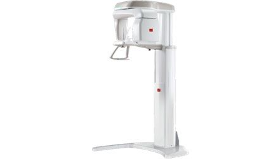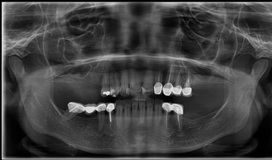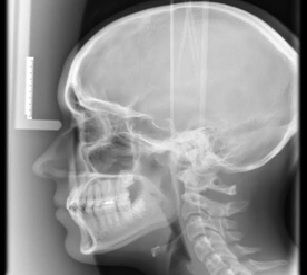



An Orthopantomogram, or OPG, is a special type of x-ray that looks at the lower face, teeth, jaw, joints and maxillary sinuses. The teeth are displayed in a long flat line. This x-ray is used to demonstrate the number of teeth as well as their position and growth, and is very useful to assess teeth that have not yet surfaced.
While taking OPG, the arm of the machine will rotate slowly around the head but will not come into contact with the patient. The Radiographer (a technologist trained in medical and dental imaging) will instruct the patient to bite on a small plastic mouthpiece attached to the machine, which keeps separates the upper and lower teeth and helps position the mouth properly in the machine.

A Lateral Cephalogram is an x-ray of the side of the face with very precise positioning, so that various measurements can be made to determine the current and future relationship of the upper and lower jaw (maxilla and mandible) and therefore assess a patient’s bite. This is particularly useful to plan orthodontic treatment, if needed.
What should patients expect when they arrive at the clinic?
For a Lateral Cephalogram you are required to hold still and bite together on the back teeth. Lips should berelaxed. The Radiographer will help ensure that patients are in the correct position before taking the x-ray.

How long does it take?
The procedure is very brief (about 10 minutes or less) and is painless and simple. It is very important to follow all instructions and hold still once positioned.
Images are interpreted by a Dental Radiologist (a dentist with training in dental imaging and
pathology). Patients can get the results immediately or can get them collected later .
Are any special preparations required?
There is no special preparation required and there are no after effects following the xray. Once at the clinic, patients will be asked to remove any jewellery or metallic items from the head and neck region, including dentures and plates, as these often interfere with x-ray image formation and produce unwanted artifacts.